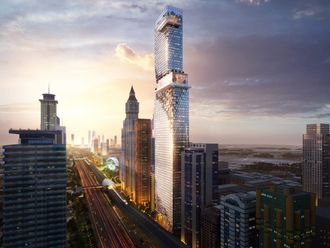With the persistent expansion of the commercial and residential areas in the heart of Abu Dhabi, the most common issue confronting residents had been, interestingly enough, that of parking.
Double parking and extra "middle rows" in parking lots are — and have been — a common sight across the capital. Seeing the projections for the capital — which recent reports estimate at approximately 600,000 residents and approximately 70,000 parking spaces on the island — the equation obviously does not add up.
In response, the Department of Transport has devised the Mawaqif scheme — a "comprehensive and integrated programme for the management of parking in the capital". Over the last six months, sectors between Hamdan Street and the Corniche have been adopted as Mawaqif parking zones, with significant results.
But where have all the cars gone? Everyone living in Abu Dhabi used their vehicles to go about their daily businesses and chores, but this appears to have been eliminated since Mawaqif came on.
The most recent area to receive the Mawaqif is Al Markiziyah East between Airport Road (2nd Street) and Muroor Road (4th Street). In years past, be it day or night, cars were regularly seen parked on kerbs and sidewalks as parking spaces were at a premium.
As Mawaqif became operational, drivers started heeding the parking regulations and roadside parking has dropped. It is now easier to drive around to find spaces and avoid damaging cars or endangering pedestrians.
Premium sections
These days, up until the evenings, it is easier to find parking for your required time period. However, in the nights the premium sections are often half-full, while the standard areas are filled.
Could this be because residents are not prepared to pay the extra Dh1 an hour for the convenience of parking closer to a building? To support businesses and residents, Mawaqif introduced season tickets which allow two vehicles per property.
This actually works out to be more reasonable than the usual pay-per-hour rate. Furthermore, top-up Mawaqif cards are available for those who prefer them.
So, the problem is solved and everyone is happy. Or is it? It appears Mawaqif has relieved some of the parking issues in the city, but it begs the main question, where have all those cars gone?
Have residents now decided en masse to take taxis and buses to commute around the city? We know the Department of Transport has increased the number of taxis and buses and created new bus routes to make city travel more convenient.
However, coupled with the construction activity taking place all over the city, there seems to be an increasing number of vehicles and traffic jams in the city these days. Though traffic appears to be increasing, the recent opening of the lower sections of Salam Street is reaping benefits.
Anticipation
In the latest move, areas of Khalidiyah between Corniche and Zayed the First (7th Street) are now being painted in anticipation of the installation of Mawaqif. This is likely to extend all the way to the Spinneys and the main First Gulf Bank branch on Zayed the First (7th Street).
Once this has been completed, the remaining areas designated for Mawaqif — and not yet introduced — will be in the Tourist Club Area.
The temporary one-way system to some extent prohibits Mawaqif and with the loss of so much parking, it is hard to see how it can be implemented.
Future plans include redesigning most of the blocks in the city centre, predominantly the ones between Hamdan and Corniche. Blocks of two or three buildings might be demolished and replaced with larger ones which offer bigger areas so as to allow underground parking.
Currently, the plot sizes are too small that any form of underground parking will be too expensive to build and would have a limited capacity for cars.
Let us hope it will be completed sooner rather than later. Mawaqif is coming to a place near you.











